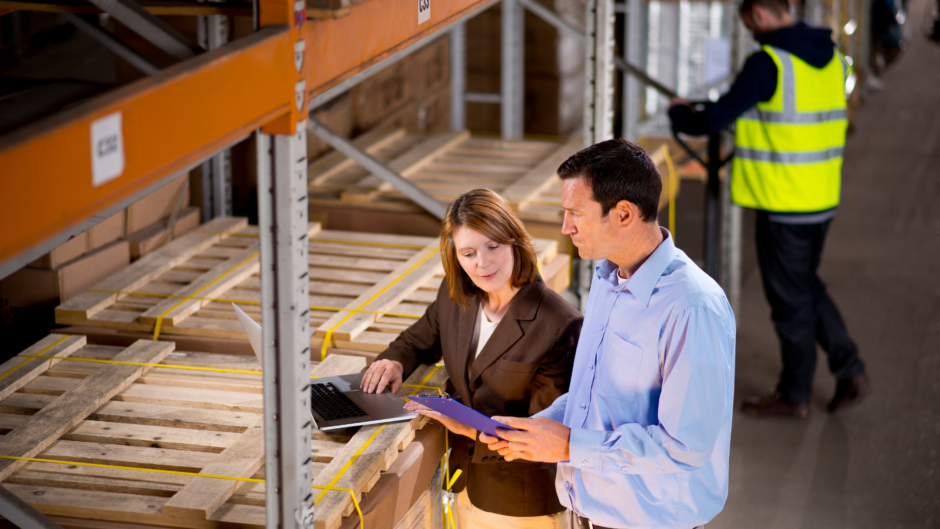Packing goods for shipment is a multifaceted process that demands careful consideration of various factors within the distribution industry’s expansive landscape. With logistics, equipment, cost, and space being integral components, designing effective packing stations becomes paramount.
Whether converting existing space within a warehouse or investing in prefabricated solutions like the ones offered by Sunward Steel Buildings in UT or elsewhere, the focus remains on optimizing efficiency and productivity.
Regardless of your decision, here are some tips to focus on when designing a packing station.
Ergonomics
Ergonomics is one of the key factors to consider in a warehouse packing station. If your packing stations are not ergonomically designed, you need to go back to the drawing board. The last thing you want is workers unable to work due to surfaces being too low, too high, or too far to stretch. Poor ergonomics can quickly lead to repetitive strain injuries amongst your workers, and if you didn’t take the time to consider this, it’s a lawsuit waiting to happen. Remember, staff health is your responsibility, so you need to take care to ensure your workers aren’t in too much pain to work.
The Roofing & Flooring
The roofing and flooring of a warehouse packing station are integral components that significantly impact the functionality, safety, and efficiency of the space. When designing such a facility, careful consideration must be given to these essential elements to ensure optimal performance and longevity.
The roofing system plays a critical role in protecting the warehouse interior from external elements such as rain, snow, and sunlight. A durable and weather-resistant roofing material installed with the help of experts who offer commercial roofing old saybrook ct (or in other locations) can help prevent water leaks, moisture infiltration, and damage to goods and equipment stored within the facility. Additionally, proper insulation and ventilation are vital to regulate temperature and humidity levels. This can create a comfortable and conducive working environment for employees.
Similarly, the choice of flooring material is paramount to withstand the heavy foot traffic, equipment movement, and material handling activities typical in a warehouse setting to minimize the risk of any accidents. In cases where accidents do occur, employees might even choose to pursue legal action against the company with the support of law firms like Schuerger Shunnarah Trial Attorneys (warforcincy.com), which could potentially tarnish the company’s reputation. Therefore, durable and slip-resistant flooring options such as concrete, epoxy, or industrial-grade tiles are preferred to ensure safety and minimize the risk of accidents or injuries of any workers. Moreover, easy-to-clean and low-maintenance flooring solutions facilitate efficient cleaning and sanitation practices, promoting hygiene and compliance with industry regulations.
Accessibility
Similarly, you need to consider how accessible your equipment is to your staff. Staff are all different heights and weights, so if someone is too short to reach something, you need to make changes to accommodate them. This might mean providing adjustable equipment or providing safe platforms to stand on. The last thing you want is to be accused of being an inaccessible workplace, so you need to make every effort to improve accessibility.
Item Segregation
If your warehouse handles different products, you may need to consider how you’re going to keep items safely separated. Your packing stations should meet different packing standards depending on the item being packed. For example, food is subject to strict food safety standards to avoid contamination and cross-contamination. Chemicals, meanwhile, should be kept in their own specific station, whilst electronics should be packed in another. Also, items should never cross into the wrong station, so consider installing barriers to prevent items making their way into the wrong place, and color code areas and items so that your workers know if the colors don’t match, the item is in the wrong place.
Temperature
Temperature control is important for two reasons. First and foremost, it ensures safe working conditions for your workers. If your warehouse is too hot or cold, your workers can claim the conditions to be unsafe, and they’ll be within their rights to walk out. The second reason is to ensure the items you are packing remain at the right temperature. This is especially important for food, whether that’s fresh, ambient or frozen, but also for chemicals to ensure they remain stable and unreactive. If your items require a cold temperature to maintain safety, it can be hard to balance the two reasons, so you’ll need to provide PPE to keep your workers warm.
Loading Space
Having enough loading space is absolutely crucial in warehouse packing stations, especially during those busy periods when there’s a ton of items coming through. If there’s not enough space to load everything properly, warehouses can get super crowded and cause major backups at the packing stations. That’s why it’s so important to manage space efficiently, especially when you’re dealing with limited room to work with. One smart way to handle this is by making sure all the warehouse goods and materials are sorted and put into different containers. You might consider exploring services like Container Hire from Containers4Sale UK (or from a similar firm in a different location) to assist with this aspect. It can not only save space but also help keep everything organized, thus making it easier to avoid mix-ups and keeping things running smoothly.
Also, when planning where to keep containers, it’s essential to consider their proximity to packing stations and loading areas. Placing containers strategically near packing stations can streamline the packing process and reduce the time spent moving items between storage and packing areas. Moreover, having a system in place for efficiently rotating containers in and out of storage areas can help optimize space utilization and ensure items are readily available when needed, even during peak periods.
Warehouse packing stations are structured to minimize the amount of time and effort required for packing. These stations allow workers to pack products faster, easier, and more efficiently. However, poor use of the packing station can result in significant losses. Warehouse workers need the right tools, the right training, and the right safeguards to minimize injuries and damages.


